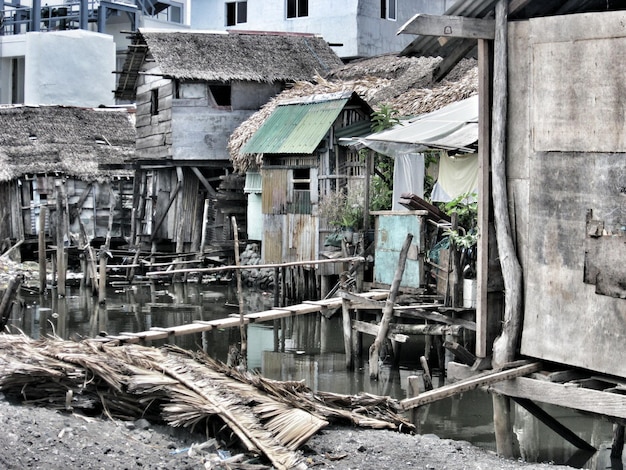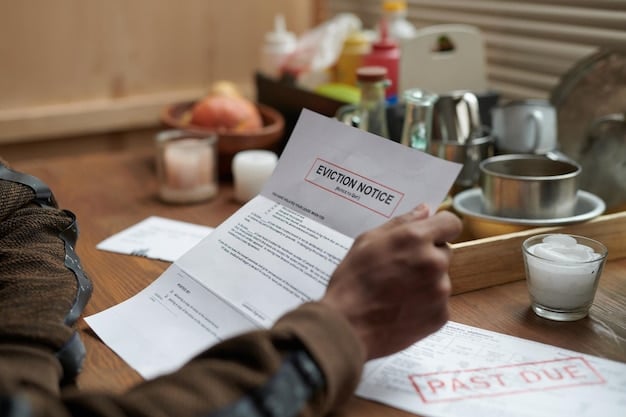Emergency Disaster Relief Funds: Eligibility and Application in the US

Emergency disaster relief funds are now available in the US to help individuals and communities recover from unforeseen disasters, offering financial assistance to those who meet specific eligibility criteria and follow the outlined application process.
The aftermath of a disaster can leave individuals and communities grappling with immense challenges. Fortunately, emergency disaster relief funds released are now available in the US, offering a lifeline to those affected. Understanding the eligibility criteria and application process is crucial to accessing this much-needed aid.
Understanding Emergency Disaster Relief Funds
Emergency disaster relief funds are a critical resource designed to provide financial assistance to individuals, families, and communities recovering from the devastating impact of natural disasters, such as hurricanes, floods, wildfires, and earthquakes. These funds aim to alleviate the immediate financial burdens and support long-term recovery efforts.
These funds are typically provided by government agencies, non-profit organizations, and private entities. Each source may have different requirements and guidelines. It’s essential to understand the types of assistance available and how to access them.
The Role of Federal Agencies
Federal agencies, such as the Federal Emergency Management Agency (FEMA), play a pivotal role in administering disaster relief funds. FEMA provides assistance to individuals and households through programs such as the Individuals and Households Program (IHP).
Non-Profit Organizations Involvement
Non-profit organizations also contribute significantly to disaster relief efforts by providing direct financial assistance, resources, and support services to affected communities. These organizations often work in coordination with government agencies and community partners.
- FEMA: Offers individual and household assistance, housing assistance, and other needs assistance.
- American Red Cross: Provides immediate relief, shelter, and support services to disaster victims.
- Salvation Army: Offers food, shelter, financial assistance, and emotional support to those affected by disasters.
- Local Community Organizations: Provide targeted assistance to specific communities and populations affected by disasters.
Navigating the complex landscape of emergency disaster relief funds requires a clear understanding of the available resources and eligibility requirements. By exploring the various options and leveraging the support of government agencies and non-profit organizations, affected individuals and communities can access the financial assistance needed to rebuild their lives.
Eligibility Criteria for Disaster Relief Funds
Having a clear understanding of the eligibility criteria is crucial for individuals and communities seeking access to disaster relief funds. Compliance with these criteria ensures that assistance reaches those with the most urgent and pressing needs following a disaster.
Eligibility requirements can vary depending on the source of the funds, such as government agencies, non-profit organizations, or private entities. Typically, eligibility is determined based on factors like residency, income, the extent of damage, and specific needs arising from the disaster.
Residency and Citizenship Requirements
Many disaster relief programs have residency requirements, which mandate that applicants must reside within the affected area to qualify for assistance. Additionally, some programs may have citizenship or legal residency requirements.
Income and Financial Need
Income and financial need are often key factors in determining eligibility for disaster relief funds. Programs may have income thresholds or require applicants to demonstrate financial hardship resulting from the disaster.
- Proof of Residency: Utility bills, lease agreements, or government-issued identification to verify residency in the affected area.
- Income Verification: Pay stubs, tax returns, or bank statements to demonstrate income and financial need.
- Damage Assessment: Documentation of property damage through photographs, repair estimates, or insurance assessments.
Meeting the eligibility criteria is a critical step in accessing disaster relief funds. By gathering the necessary documentation and understanding the specific requirements of each program, applicants can increase their chances of receiving the financial assistance needed to rebuild their lives and communities.

Step-by-Step Guide to Applying for Relief Funds
The application process for disaster relief funds can seem overwhelming, particularly in the midst of post-disaster chaos. However, understanding each step will increase chances of getting your application processed to get necessary aid.
Gathering these documents before starting the application process makes the process of applying for aid much smoother and faster.
Step 1: Registering with FEMA
The first step in applying for disaster relief funds is to register with the Federal Emergency Management Agency (FEMA). Registration can be done online, by phone, or in person at a disaster recovery center.
Step 2: Document Damage and Losses
Gathering documentation of property damage and losses is essential for the application process. Include photographs, repair estimates, insurance assessments, receipts, and any other relevant documents.
- Online Registration: Visit the FEMA website and complete the online application form.
- Phone Registration: Call the FEMA helpline and speak with a representative to register your claim.
- In-Person Assistance: Visit a disaster recovery center to receive personalized assistance with the application process.
Navigating the application process for disaster relief funds requires careful attention to detail and thorough documentation. By following each step closely and gathering the necessary information, applicants can increase their chances of receiving timely assistance to support their recovery efforts.
Common Mistakes to Avoid During Application
Even with careful attention, applicants can make mistakes that delay or deny their application for disaster relief funds. Awareness of these common pitfalls empowers applicants to navigate the process more effectively and maximize their chances of success.
Many of these mistakes stem from inattentive document gathering. Be sure to collect the documents you need before completing the application to avoid these simple errors.
Incomplete or Inaccurate Information
One of the most common mistakes is providing incomplete or inaccurate information on the application form. Ensure all fields are filled out correctly and double-check for errors before submitting the application.
Failure to Provide Required Documentation
Failing to provide all required documentation can also lead to delays or rejection. Gather all necessary documents, such as proof of residency, income verification, and damage assessments, before submitting the application.
- Review Instructions: Carefully review the instructions and requirements for the application process before beginning.
- Double-Check Information: Verify all information provided on the application form for accuracy and completeness.
- Seek Assistance: Don’t hesitate to seek assistance from FEMA representatives or volunteer organizations if you need clarification or support.
Avoiding common mistakes during the application process is essential for ensuring timely and accurate processing of disaster relief funds. By being thorough, accurate, and proactive, applicants can improve their chances of receiving the assistance they need to recover from the disaster.

Maximizing Your Chances of Approval
Many factors can impact the approval of an application for disaster relief funds. Applicants can enhance their chances of success by taking proactive steps to strengthen their application and demonstrate their eligibility and need for assistance.
A key to successfully navigating the disaster relief application process is to become as informed as possible and get help when you need it.
Document Everything
Thorough documentation is essential for supporting your application. Gather receipts, invoices, photographs, and any other evidence that demonstrates the extent of the damage and losses caused by the disaster.
Be Proactive and Persistent
Be proactive in following up on your application and providing any additional information requested by the authorities. Persistence can help ensure that your application receives timely attention and consideration.
- Maintain Records: Keep copies of all documents submitted with your application for future reference.
- Stay Informed: Monitor updates and announcements from FEMA and other relevant agencies regarding disaster relief programs.
- Advocate for Yourself: Don’t hesitate to advocate for your needs and rights throughout the application process.
Maximizing the chances of approval for disaster relief funds requires diligence, accuracy, and proactive engagement. By documenting everything, seeking assistance when needed, and maintaining open communication, applicants can increase their likelihood of receiving the financial support necessary to rebuild their lives and communities.
Appealing a Denied Application
Receiving a denial notice for disaster relief funds can be disheartening, but it’s important to know that you have the right to appeal the decision. Understanding the appeals process and taking appropriate steps can help you challenge the denial and potentially secure the assistance you need.
The first step in any appeal is to understand the reason your application was denied. With a clearer view of the situation, the appeal can be properly prepared.
Understand the Reasons for Denial
Carefully review the denial notice to understand the reasons for the rejection. This information is crucial for building a strong appeal and addressing the specific concerns raised by the authorities.
Gather Additional Documentation
Collect any additional documentation that supports your case and addresses the issues identified in the denial notice. This may include additional photographs, repair estimates, or financial records.
- Submit an Appeal Letter: Write a formal appeal letter outlining the reasons why you believe the denial was incorrect and providing any supporting documentation.
- Meet Deadlines: Be sure to submit your appeal within the specified timeframe to ensure it is considered.
- Seek Assistance: Consider seeking assistance from legal aid organizations or disaster relief advocates who can provide guidance and support throughout the appeals process.
Appealing a denied application for disaster relief funds requires a clear understanding of the appeals process, thorough documentation, and proactive engagement. By challenging the denial with a well-supported appeal, applicants can potentially overturn the decision and access the financial assistance they need to recover from the disaster.
| Key Point | Brief Description |
|---|---|
| 📝 Eligibility | Residency, income, and damage are key factors. |
| ✅ Application Steps | Register with FEMA, document damage thoroughly. |
| ❗ Common Mistakes | Incomplete info, missing documents can cause delays. |
| ⚖️ Appealing Denial | Understand denial reason, gather more evidence. |
Frequently Asked Questions (FAQs)
▼
Eligibility typically includes individuals and households affected by a declared disaster, meeting residency requirements, and demonstrating financial need due to the event.
▼
You can apply through FEMA’s website, by phone, or in person at a disaster recovery center. Registration and providing accurate documentation of damages are crucial.
▼
Required documents often include proof of residency, income verification, identification, and documentation of property damage, such as photos and repair estimates.
▼
If your application is denied, review the denial notice carefully, gather additional documentation, and submit an appeal within the specified timeframe, addressing all concerns.
▼
Assistance is available from FEMA representatives, volunteer organizations, and legal aid services. Disaster recovery centers also offer personalized support during the application process.
Conclusion
Navigating the world of **emergency disaster relief funds released** may seem overwhelming, but understanding the eligibility criteria, application process, and potential pitfalls can empower individuals and communities to access the financial assistance needed to rebuild their lives after a disaster. By following the steps outlined in this guide and seeking support when needed, you can maximize your chances of receiving the support you deserve.





